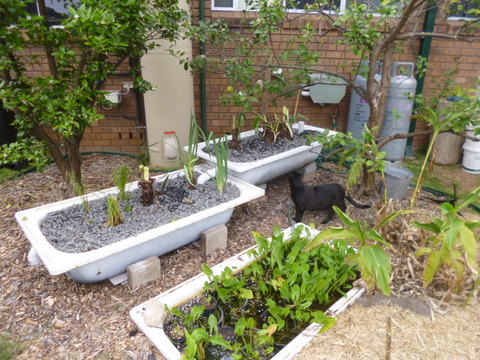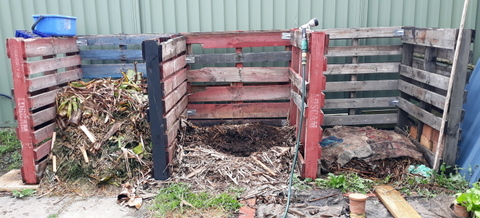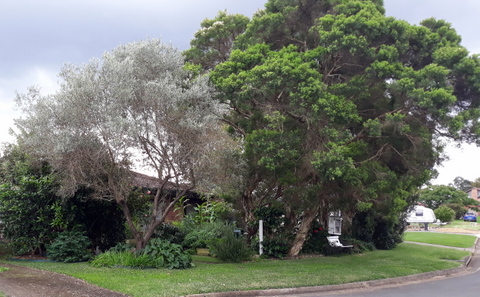
In Grass Roots Magazine No 71 (Feb 1989) an account of how we were living at the time was published under the title of 'Achieving the Good Life'. (That article can be accessed here) I read through it again and decided it was time for an update on how things had changed over the last thirty five years. We are still here and still living the good life, Here is the update, published in Grass Roots Magazine No 283 (June/July 2024).
Food Growing
We have 14 veggie patches in our back yard, 7 are 1.2m x 3m and the rest are 1.2m x 2m. Up until the early 2000s my process was to cultivate everything, add bought in manure, mulch it, then plant everything with bought in seedlings and seeds to grow a glut of veg in late spring/early summer. By late summer there was not much left, and I let things go fallow until the following spring.
In 2005 I decided to get serious and provide food all year ‘round, so I developed a sowing guide where I would sow every two weeks, pot on into newspaper pots two weeks later and then two weeks later again plant out the potted-on seedlings into a veggie bed. This was so that we would not produce a glut but regular supply throughout the year, although there are some exceptions like onions and corn. To fertilise the beds, rather than buy in manure, I built a chook tractor and move them onto a new patch every two weeks. There are some other additives (like compost and rock dust) but mostly our fertility is maintained by the chooks.
We also have a chook ‘retirement village’ where I put a bale of straw in as required and the chooks remove any wheat seeds, break down the stalks and add manure. This material then becomes our mulch.
We make use of perennial vegetables that produce edible crops at various times of the year, scattered throughout the front and the back yard. They include choko, Jerusalem artichoke, sweet potato, water chestnuts, asparagus and rhubarb.
In terms of tree foods, we have fruit, including 7 citrus, a couple of apples, a nectarine and a few ‘others’ such as fig, olive, (huge) mulberry, feijoa, lilly pilly, passion fruit and heaps of bananas in a banana circle. With the exception of a couple of citrus and the bananas, all the rest of the fruit are grown in the front yard. Most of the original fruit trees in the back yard did not make it in the long term with the exception of the mandarin and the orange (which became the choko tree).
For herbs and spices we have a full herb spiral (or in our case a herb wedding cake) in the front yard, as well as a large bay tree and curry leaf also in the front yard. In the back yard we have self-watering pots with turmeric, ginger, galangal and cardamom (we are still waiting for the cardamom to flower!). A recent addition has been a small cinnamon tree, and we are waiting to see how many years it will be to get a yield off it!
Livestock
As mentioned above, we have chooks in a chook tractor that cultivates, removes weeds and fertilises all of our veggie patches in turn and the ‘retirement village’ for older chooks that breaks down the straw to provide mulch. The chook tractor is on its fourth generation, this latest one having a framework of aluminium angle rather than timber, is lasting much longer.
We did eventually have a go at bees, both European and native bees, at different times but both failed for different reasons. We also have a worm ‘bath’ that provides worm castings for inclusion in our homemade seed raising and potting mixes.
Energy
Our original hot water service (flat plate collector style solar) bit the dust many years ago and was replaced with an evacuated tube style which worked well but then died about ten years ago. We replaced it with another evacuated tube style solar water heater from a different supplier and it is still going strong. It is electric boosted but we rarely need to put the booster on.
The old 12 volt, lead acid battery system I put together back in late ‘70s was slowly expanded to the point where it provided power for all the lighting, the fridge and a few other bits and pieces like a water pump on one of the rainwater tanks. In 2016 a number of things came together and we upgraded to a 24 volt commercial system with an inverter that powered the house and two banks of nickel iron batteries. We still have the grid connected as back up but for most of the year the new system provides most of our power. There are two items (a small air con and the hot water booster) that are grid connected but the rest is powered by the new system. We also have a small (1000w) grid connected solar.
For cooking we have the gas stove, although we also have a single induction cooker and a bench mounted oven which are powered by solar electricity during the warmer parts of the year, and the gas is a backup, we haven’t changed a gas bottle for a few years. The old open fire lasted well into this century but in 2013 we decided we needed something much more efficient and purchased a Nectre bakers oven with a cook top, so that in the cooler parts of the year it keeps us warm while allowing us to cook on the top and bake in the oven.
We do have a number of solar cookers that I have built over the years as well as several stored heat cookers. The reduced sun due to the recent La Nina years and improved convenience of the solar electricity means that the solar cookers have not has as much use recently as they did.
Water
The two original 2500 litre corrugated steel tanks are still in place and storing water, even if the older one is now looking a bit worse for wear. We now have a 5,500 litre and a 5,000 litre slimline tank in the front yard plus a 3000 litre slimline in the back yard running alongside the garage. Those, along with a couple of smaller tanks bring our rainwater storage to 19,000 litres total. Most of this is used to keep the garden humming and we use ollas, deep pipe waters and buried pipe waterers to keep the place hydrated with maximum water efficiency.
For greywater, we have a constructed wetland in the back yard based on a couple of bathtubs that takes water from the laundry sink (washing machine and dishwasher mainly) and then keeps fruit trees watered. As well as removing some of the salts, the constructed wetland reduces the water pH from over 9.0 to around 7.0. We also have a line from the spa bath in the bathroom which takes the greywater to the banana circle, such that even when we were in the middle of a drought, the bananas were healthy and productive.
The House
There has been little to no alterations to the house itself, except for the construction of a back deck running along the west facing wall of the kitchen/dining room which considerably reduces the impact of the summer sun. The deck has a clear polycarbonate roof, which has 90% shade cloth over it in summer that is removed to let more light and warmth in for winter.
Community
Our front yard has a street library, community bench and a community pantry to take what excess produce we have. There are also a couple of wicking bathtubs at the northeast corner of the front yard growing leaf crops for people to take as they need and a sign also suggesting they can take leaves from our bay tree at that corner of the yard.
We have been members of Permaculture Sydney West for fifteen years and for ten years were running our own sustainable living group every month at the community centre at our local shops, which unfortunately did not survive the Covid lockdowns and after. I am still very active with PSW however.
Biodiversity
Through my learnings from Permaculture, I became concerned with the reduction in biodiversity in the suburban landscape so over the years we have installed a number of features to support this. Those features include – watering stations for birds and for insects, native plantings, insectary flower beds, a bee/bug hotel, microbat roosting boxes and gabions as habitat for local lizards and insects.
Conclusion
Around the turn of the century, I was doing a course at university that included environmental management, its impact was to change our focus so we no longer strive to be self-sufficient, but to live more sustainably. It’s worth a go!


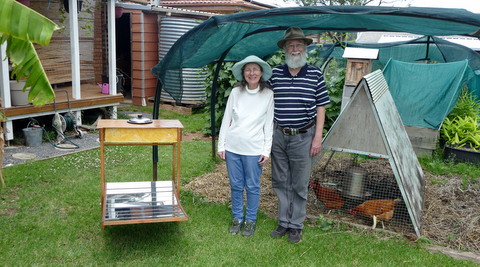
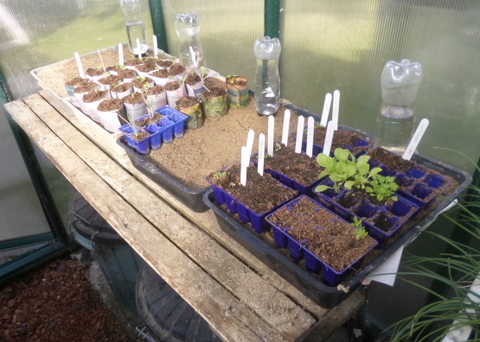
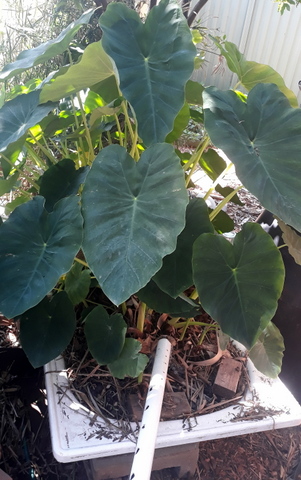

.JPG)
